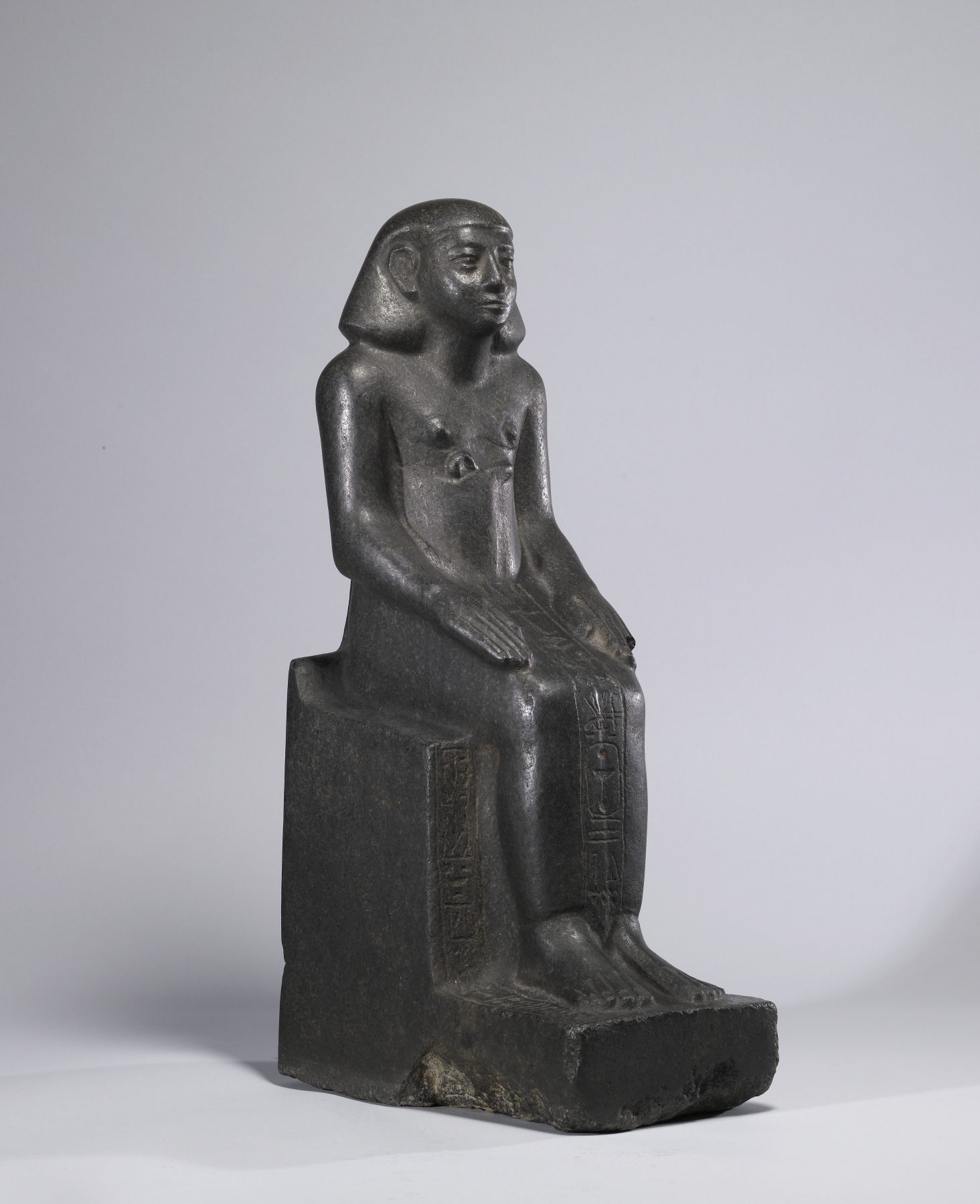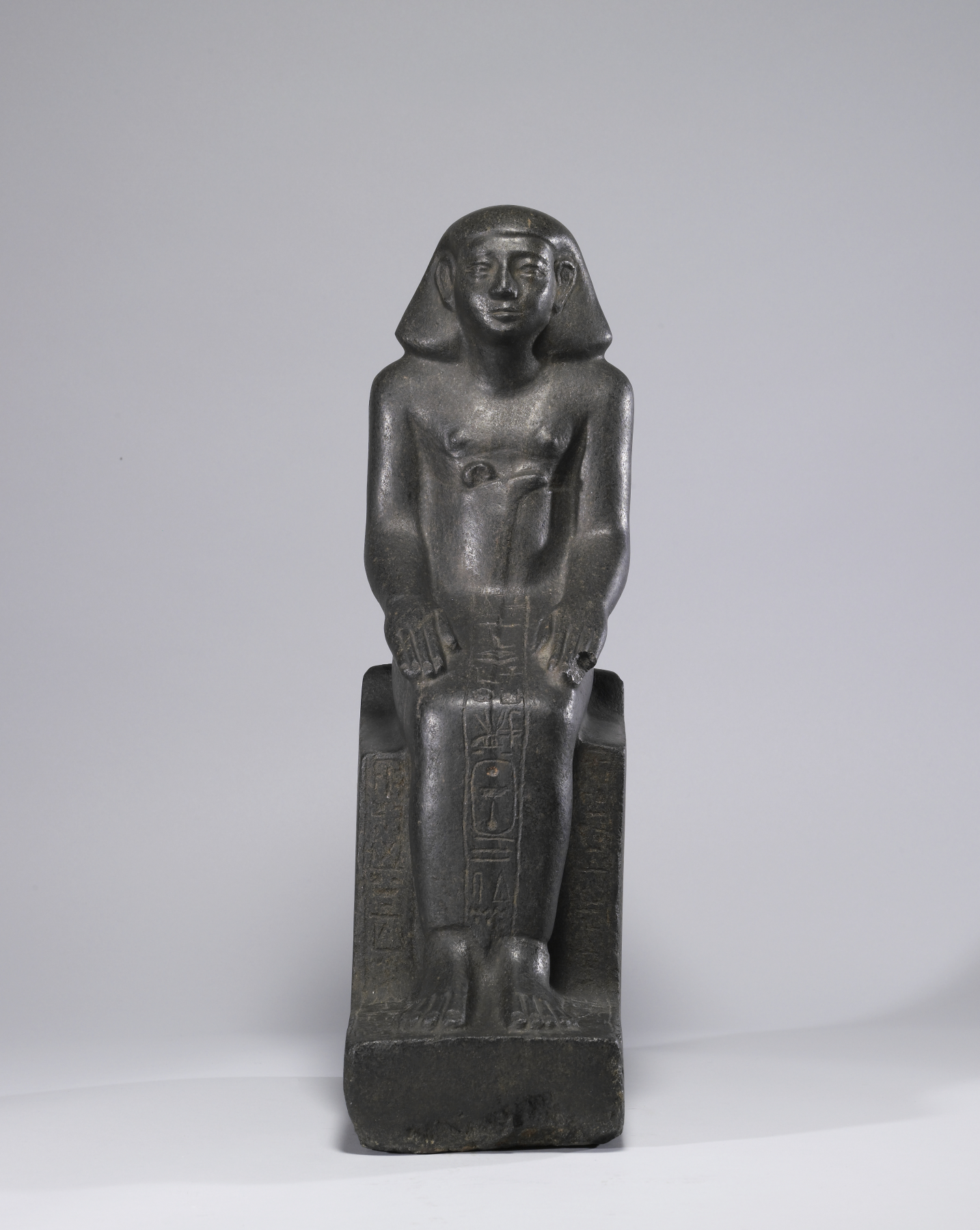Seated Figure of Nefer-hotep
(Ancient Egypt and Nubia )
This statue is of a non-royal seated man with hands held flat against his thighs. The face is triangular, with modeled brows. The eyes are set into shallow, narrow sockets. The lids of the eyes are indicated by two modeled ridges.
Sculpture patrons of the Middle Kingdom favored the use of hard, dark stones and compact, block-like forms to insure the long-term survival of their statues. The texts on the front of the kilt and on the sides of the seat request offerings and record Neferhotep's name and titles, as well as his parentage. The deity invoked to secure the offerings is the deceased king who founded the Middle Kingdom, Nebhepetre Mentuhotep II (11th Dynasty).
Inscription
Provenance
Provenance (from the French provenir, 'to come from/forth') is the chronology of the ownership, custody, or location of a historical object. Learn more about provenance at the Walters.
Giovanni Dattari, Cairo, [date and mode of acquisition unknown]; Dattari Collection Sale, Hôtel Drouot, Paris, 1912, no. 294, pl. XXVIII; Henry Walters, Baltimore, 1912, by purchase; Walters Art Museum, 1931, by bequest.
Conservation
| Date | Description | Narrative |
|---|---|---|
| 7/14/1967 | Treatment | cleaned |
| 10/20/1998 | Examination | survey |
Geographies
Egypt (Place of Origin)
Measurements
20 7/8 x 5 7/8 x 11 7/16 in. (53 x 15 x 29 cm)
Credit Line
Acquired by Henry Walters, 1912
Location in Museum
Accession Number
In libraries, galleries, museums, and archives, an accession number is a unique identifier assigned to each object in the collection.
In libraries, galleries, museums, and archives, an accession number is a unique identifier assigned to each object in the collection.
22.214






